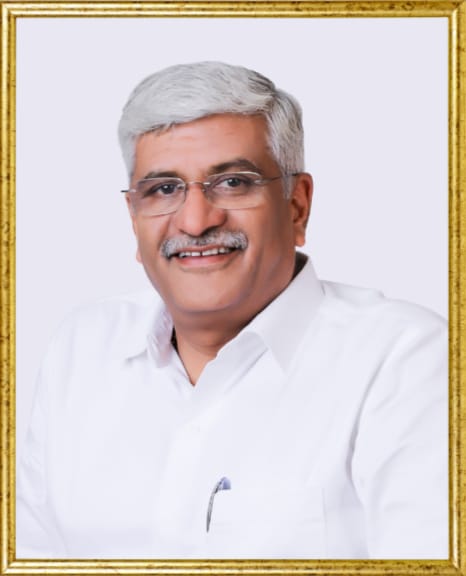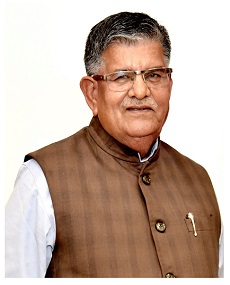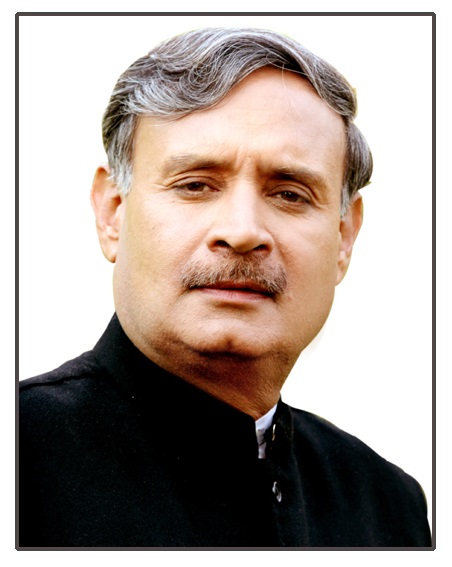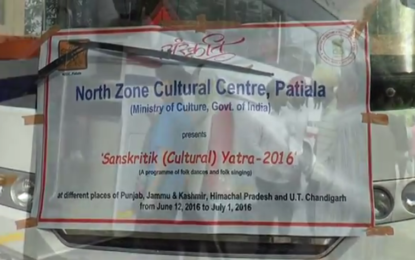ABOUT US
North Zone Cultural Centre, Patiala was inaugurated on 6th November 1985 by the then Prime Minister of India. This centre has been registered under Societies Registration Act XXI of 1860. Main objective of this cultural centre is to preserve, innovate and promote the projection/dissemination of arts of the zone to develop and to promote the rich diversity and uniqueness of various arts of the zone and to upgrade and enrich consciousness of the people about their cultural heritage. North Zone Cultural Centre also aims at laying special emphasis on its activities on the linkage among various areas through evolution of styles and their contribution to the larger composite identity of cultural heritage of India to make special efforts to encourage folk and tribal arts and to frame special programmes for the preservation and strengthening of vanishing art forms in the states of Himachal Pradesh, Uttarakhand, Haryana, Punjab, Rajasthan and Union Territory of Jammu And Kashmir, Ladakh and Chandigarh.
Although, there is variation in the cultural activities of the participating sates yet there runs a common bond of shared heritage through them. We begin with the land of the Ladakhis, the Buddhist people are famous for their mountains, their monasteries, their music and their exquisite attire. A little below on the lush green hills and valleys of the Kashmir, live the people famous for their beauty, their skill in producing the most delicate crafts and weaves and their cuisine. From Ladakh, not only the geography, the religion, the language change, but the race itself changes. Coming downwards to Jammu, the Dogra people have their own language- Dogri. They are mostly Hindus and are proud of their miniature paintings, music and dance.
On the high imposing peaks of Himachal Pradesh, a land famous for temples live gentle traditional people, who sing and dance, free and pure as the mountain air itself. The bright multicoloured and bordered shawls and pattus, the Himachali cap and cascades of silver jewellery make the Himachali stand anywhere.
Uttarakhand is the state with cultural tradition. It is land of pious Ganga and important religious centres situated on its banks. The state imparts a special colour to the Indian culture with the arts, crafts, dances and rich musical notes.
The swirling twenty meter skirts and the sparking odhanis of the girls and tall handsome men spell Haryana. With fertile and tilled by hard working people, it’s famous for its potters, its needlework, colourful costumes and its colourful dances.
Punjab, the cradle of one of the most ancient civilizations, is inhabited by hard working people who sing and dance with gay abandon whenever the mood takes them. The Punjabi bhangra needs no introduction the world over, and the dhol is the largest drum in India.
Rajasthan- the land of legends, bravery and colour- has different tribes spread all over its hugs expanse, each with different costumes, different costumes, different songs and dances and skills in tie and die, printing, patchwork, jewellery making, carving, pottery, etc.
The Union Territory of Chandigarh has special characteristics merging the traditions and cultural heritage of all these states and it is hub of cultural activities for all the incorporating states. Chandigarh popularly known as “The City Beautiful” has a cosmopolitan outlook, which really represents the bond of a shared cultural heritage of the constituent states.
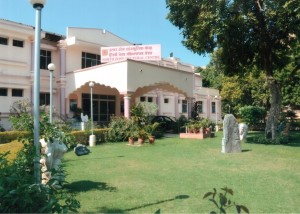
Headquarter: Virsa Vihar Kendra, Patiala
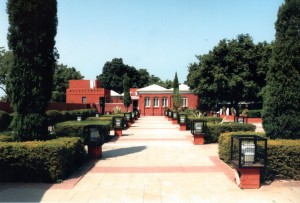
Sub-Office: Kalagram, Manimajra, Chandigarh
Information
-
 FOLK ARTIST AND YOUNG ARTIST HONOUR AWARD 2024
FOLK ARTIST AND YOUNG ARTIST HONOUR AWARD 2024Oct 09, 2024 Comments Off on FOLK ARTIST AND YOUNG ARTIST HONOUR AWARD 2024
Events
-
 Hindi play “Mujhe Amrita Chahiye” on the...
Hindi play “Mujhe Amrita Chahiye” on the...Mar 24, 2025 Comments Off on Hindi play “Mujhe Amrita Chahiye” on the occasion of World Theatre Day on 27 March 2025
-
 North Zone Cultural Centre, Patiala, Ministry of Culture,...
North Zone Cultural Centre, Patiala, Ministry of Culture,...Feb 04, 2025 Comments Off on North Zone Cultural Centre, Patiala, Ministry of Culture, Government of India is organizing a two-day Drama Festival on 09 and 10 February 2025 at Kalidas Auditorium, Virsa Vihar Centre, Patiala. You all are cordially invited.
Videos
Follow us on Facebook
Follow us on Twitter
Related Links
Archives
- March 2025
- February 2025
- January 2025
- December 2024
- November 2024
- October 2024
- September 2024
- June 2024
- May 2024
- March 2024
- January 2024
- December 2023
- November 2023
- October 2023
- September 2023
- August 2023
- June 2023
- May 2023
- April 2023
- January 2023
- December 2022
- November 2022
- October 2022
- September 2022
- August 2022
- July 2022
- June 2022
- May 2022
- April 2022
- March 2022
- February 2022
- December 2021
- November 2021
- October 2021
- September 2021
- July 2021
- June 2021
- March 2021
- February 2021
- January 2021
- December 2020
- October 2020
- August 2020
- July 2020
- March 2020
- February 2020
- January 2020
- December 2019
- November 2019
- October 2019
- September 2019
- August 2019
- July 2019
- June 2019
- April 2019
- March 2019
- February 2019
- January 2019
- December 2018
- November 2018
- October 2018
- September 2018
- August 2018
- July 2018
- June 2018
- May 2018
- April 2018
- March 2018
- February 2018
- January 2018
- December 2017
- November 2017
- October 2017
- September 2017
- August 2017
- July 2017
- June 2017
- May 2017
- April 2017
- March 2017
- February 2017
- January 2017
- December 2016
- November 2016
- October 2016
- September 2016
- August 2016
- July 2016
- June 2016
- May 2016
- April 2016
- March 2016
- January 2016
- December 2015
- October 2015
- September 2015
- August 2015
- July 2015
- June 2015
- April 2015
- February 2015
- January 2015
- November 2014
- October 2014
- August 2014
- March 2014


